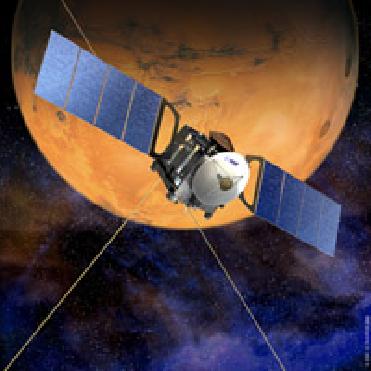
An artist's impression of Mars Express. Image credit: ESA
PARIS (BNS): What would happen to a manned mission to Mars if all communication channels with the Earth are blocked?
To make future manned missions to Mars unhindered from the �Earth-Mars conjunction� period that snaps ties between the two planets for weeks at a time, scientists have claimed to have found a solution in the form of a pair of relay satellites being placed in a �new type� of orbit.
The Earth-Mars conjunction � a natural alignment between the two neighbouring planets � occurs every 780 days, during which period, they line up in opposite sides of the Sun. It could result in direct communication between the two planets being strongly affected and even blocked by the Sun for weeks.
A team of European researchers has found a possible solution to this problem � by placing a pair of communication relay satellites into a very special type of orbit near Mars: a so-called �B-orbit� (in contrast to an 'A-orbit', based on natural orbital laws), the European Space Agency said.
However, to counter the effects of gravity and remain in place, they would have to be equipped with cutting-edge electric ion propulsion.
The ion thrusters, powered by solar electricity and using tiny amounts of xenon gas as propellant, would hold the satellites in the B-orbit in full view of both Mars and Earth. The satellites could then relay radio signals throughout the Mars�Earth conjunction season, ensuring that astronauts at Mars were never out of touch with Earth.
The research findings were released last week at the 60th International Astronautical Congress (IAC) at Daejeon, South Korea.
 Previous Article
Previous Article Next Article
Next Article













The Indian Air Force, in its flight trials evaluation report submitted before the Defence Ministry l..
view articleAn insight into the Medium Multi-Role Combat Aircraft competition...
view articleSky enthusiasts can now spot the International Space Station (ISS) commanded by Indian-American astr..
view article